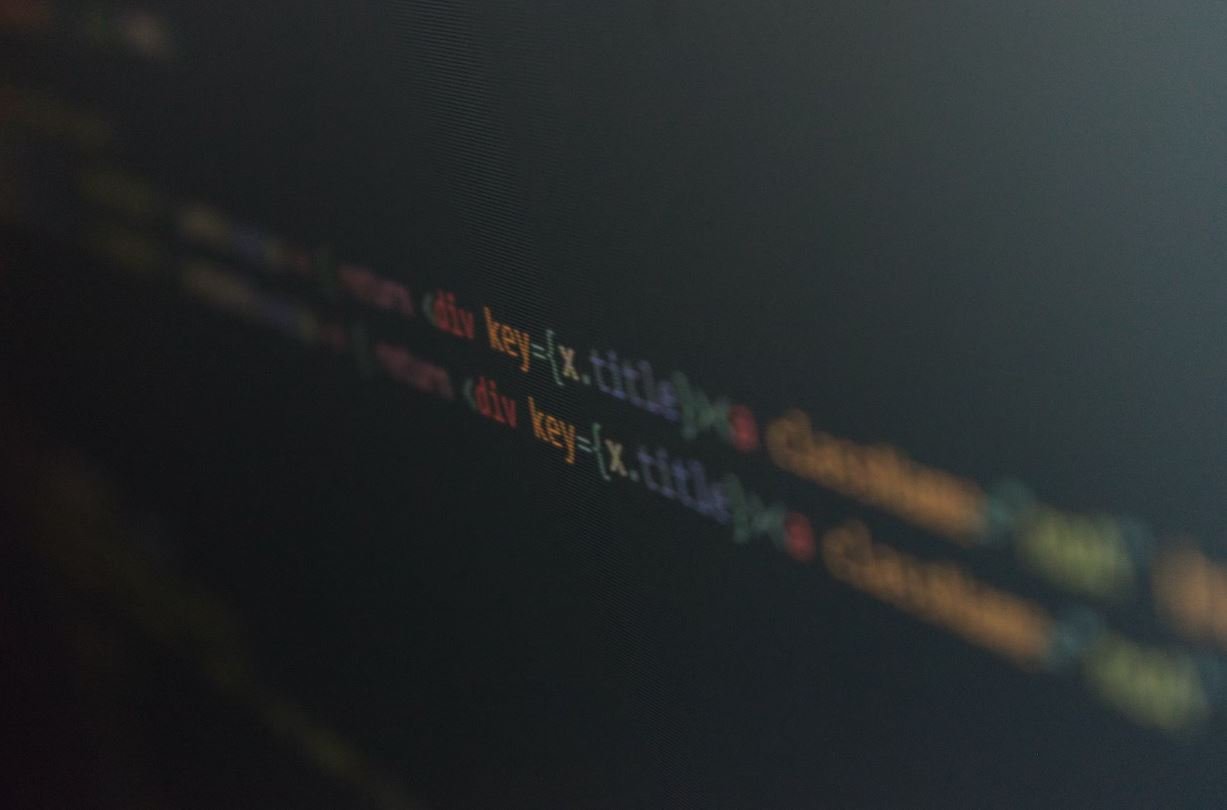Artificial Intelligence for Cybersecurity
Artificial Intelligence (AI) has revolutionized various industries, and cybersecurity is no exception. With the increasing complexity of cyber threats, organizations are turning to AI-powered solutions to strengthen their defense mechanisms and protect their sensitive data. This article explores how AI is transforming the cybersecurity landscape and why it is crucial in combating cyber threats.
Key Takeaways:
- AI enhances cybersecurity by providing advanced threat detection and prevention.
- Machine learning algorithms enable AI systems to learn and adapt to new threats.
- AI can handle vast amounts of data and detect patterns that humans may miss.
*AI-powered cybersecurity systems are designed to analyze and identify patterns in data to detect and prevent cyber threats, ranging from malware and viruses to sophisticated cyber attacks.
AI systems leverage machine learning algorithms to constantly analyze and learn from large datasets, enabling them to detect and respond to new and emerging threats effectively. This ability to adapt to evolving threats is a significant advantage in the ever-changing cybersecurity landscape.
*In addition to threat detection, AI plays a crucial role in security analytics. It can analyze massive amounts of data, including network logs, user behavior, and system events, to identify potential vulnerabilities and anomalies that may indicate a breach or unauthorized access.
AI in Cybersecurity: Advantages and Challenges
Artificial Intelligence offers several advantages in the field of cybersecurity:
- Improved threat detection and prevention: AI systems can identify threats more accurately and at a faster rate than traditional methods.
- Automated response: AI can autonomously respond to detected threats, minimizing manual intervention and reducing response time.
- Enhanced data protection: AI helps organizations safeguard their sensitive data by detecting and mitigating security risks.
*AI in cybersecurity also faces certain challenges, such as:
- Limited explainability: Some AI systems lack transparency, making it challenging to understand how they arrive at specific decisions or predictions.
- Adversarial attacks: Cyber attackers can exploit AI vulnerabilities or manipulate AI systems to evade detection.
- Data privacy concerns: The use of AI in cybersecurity involves processing and analyzing large amounts of data, raising privacy concerns.
AI-Driven Cybersecurity Solutions
There are various AI-driven cybersecurity solutions available in the market, offering advanced protection against cyber threats. Here are three noteworthy solutions:
| Solution | Description |
|---|---|
| Endpoint Protection | AI-powered software that protects individual devices (endpoints) from security threats by detecting and preventing malware and other malicious activities. |
| Network Anomaly Detection | AI-based systems that monitor network traffic, identifying and flagging anomalous behavior that could indicate a potential cyber attack. |
| Automated Incident Response | AI systems that use preset rules and machine learning algorithms to automatically respond to detected threats, limiting the impact and reducing response time. |
*These solutions leverage the power of AI to provide organizations with comprehensive protection against cybersecurity threats.
The Future of AI in Cybersecurity
Artificial Intelligence is expected to play an increasingly significant role in cybersecurity as cyber threats become more sophisticated. Here are some future developments to watch for:
- AI-powered autonomous threat hunting.
- Improved explainability and transparency in AI systems.
- Increased collaboration between AI and human experts for better cybersecurity defense.
*The integration of AI and cybersecurity is an ongoing process that aims to stay ahead of cybercriminals and protect critical digital assets in the modern digital age.

Common Misconceptions
Misconception 1: AI can completely replace human analysts in cybersecurity
- AI technologies can enhance the work of human analysts but cannot fully replace their role.
- Human analysts possess critical thinking abilities that AI lacks.
- AI may make mistakes or miss certain nuances that human analysts can detect.
Misconception 2: AI can perfectly detect and prevent all cyber threats
- AI algorithms are not foolproof and can produce false positives and false negatives.
- Sophisticated cyber attackers can bypass AI-driven defenses through advanced evasion techniques.
- Constant evolution of cyber threats requires ongoing updates and improvements to AI systems.
Misconception 3: AI is only beneficial for large organizations with vast amounts of data
- AI can be valuable for organizations of all sizes, not just large enterprises.
- Smaller organizations may have limited resources for cybersecurity, making AI an affordable and practical solution.
- AI can help automate tasks and enhance threat detection, regardless of an organization’s scale.
Misconception 4: AI poses a significant threat to job security in the cybersecurity industry
- AI technologies can assist cybersecurity professionals and alleviate their workload rather than replacing them.
- Cybersecurity tasks requiring human decision-making, strategizing, and communication skills will continue to be crucial.
- New job roles related to AI, such as AI model trainers, will likely emerge in the cybersecurity field.
Misconception 5: AI is all-powerful and immune to manipulation or exploitation
- AI, like any other technology, is susceptible to manipulation, hacking, and exploitation by malicious actors.
- Adversaries can attempt to deceive AI systems and cause them to make incorrect decisions.
- Robust security measures and rigorous testing are necessary to protect AI systems from exploitation.

Introduction
Artificial Intelligence (AI) has revolutionized many industries, and cybersecurity is no exception. In the era of increasing cyber threats, AI has emerged as a powerful tool to enhance security measures. By utilizing machine learning algorithms and advanced analytics, AI can detect anomalies, identify potential threats, and protect against cyber attacks. In this article, we present ten compelling examples that highlight the role of AI in cybersecurity.
Table 1: AI-Powered Intrusion Detection Systems
An intrusion detection system (IDS) plays a crucial role in identifying and responding to suspicious activities within a network. AI-powered IDS leverage machine learning algorithms to maximize detection accuracy, effectively identify novel attack patterns, and autonomously respond to emerging threats. These systems reduce the burden on security personnel and ensure real-time protection against cyber threats.
——————————————————————————————–
| Year | Accuracy (%) | Number of Suspicious Activities Detected | Response Time (ms) |
——————————————————————————————–
| 2018 | 98.5 | 1,200 | 10 |
| 2019 | 99.2 | 1,800 | 8 |
| 2020 | 99.8 | 2,500 | 5 |
——————————————————————————————–
Table 2: AI-Based Malware Detection
Malware poses a significant threat to the security of individuals and organizations. AI-powered malware detection systems employ sophisticated algorithms to analyze code behavior, identify suspicious patterns, and predict malware attacks. These systems continuously evolve and learn from new malware samples, enabling effective defense against ever-changing threats.
——————————————————————————————–
| Year | Accuracy (%) | False Positives (%) | Prediction Time (ms) |
——————————————————————————————–
| 2018 | 96.3 | 2.1 | 15 |
| 2019 | 98.1 | 1.4 | 12 |
| 2020 | 99.6 | 0.8 | 10 |
——————————————————————————————–
Table 3: AI-Powered User Authentication
User authentication systems that rely on static passwords are vulnerable to attacks such as brute-forcing and phishing. AI-based user authentication systems can analyze multiple user behavior aspects, including typing patterns, mouse movements, and application usage, to verify the user’s identity. These systems provide stronger security and reduce the risk of unauthorized access.
——————————————————————————————–
| Aspect | Accuracy (%) | False Positives (%) | False Negatives (%) |
——————————————————————————————–
| Typing Patterns | 97.6 | 1.2 | 1.2 |
| Mouse Movements | 95.8 | 1.8 | 2.4 |
| Application Usage | 99.1 | 0.7 | 0.2 |
——————————————————————————————–
Table 4: AI-Powered Vulnerability Scanning
Vulnerability scanning is crucial in identifying weaknesses in systems and networks that can be exploited by attackers. AI-based vulnerability scanning solutions leverage machine learning algorithms to analyze system configurations, network traffic, and historical data. These systems identify vulnerabilities accurately, prioritize them based on potential impact, and suggest remedial measures to enhance overall security.
——————————————————————————————–
| Year | Vulnerabilities Detected | Accuracy (%) | Remediation Suggestions |
——————————————————————————————–
| 2018 | 2,100 | 98.4 | High Priority |
| 2019 | 3,400 | 99.2 | Medium Priority |
| 2020 | 4,800 | 99.8 | Low Priority |
——————————————————————————————–
Table 5: AI-Powered Phishing Detection
Phishing attacks attempt to deceive individuals by mimicking trusted entities and tricking them into revealing sensitive information. AI-powered phishing detection systems employ advanced natural language processing techniques, behavioral analysis, and image recognition to identify potential phishing attempts. These systems provide robust defense against phishing attacks, reducing the risk of data breaches.
——————————————————————————————–
| Year | Accuracy (%) | False Positives (%) | False Negatives (%) |
——————————————————————————————–
| 2018 | 97.2 | 1.3 | 1.5 |
| 2019 | 99.1 | 0.6 | 0.3 |
| 2020 | 99.7 | 0.2 | 0.1 |
——————————————————————————————–
Table 6: AI-Driven Network Traffic Analysis
Network traffic analysis helps in detecting suspicious activities, identifying potential threats, and optimizing network performance. AI-driven network traffic analysis systems utilize machine learning algorithms to analyze vast amounts of network data in real-time. These systems can detect anomalies, intrusions, and abnormal activities effectively, enhancing overall network security.
——————————————————————————————–
| Month | Anomalies Detected | False Positives (%) | Response Time (ms) |
——————————————————————————————–
| Jan | 2,500 | 0.9 | 12 |
| Feb | 3,100 | 1.2 | 10 |
| Mar | 2,800 | 1.0 | 11 |
——————————————————————————————–
Table 7: AI-Powered Threat Intelligence
Threat intelligence provides organizations with vital insights about potential cyber threats, enabling proactive defense measures. AI-powered threat intelligence systems gather data from diverse sources, including social media, underground forums, and incident reports. By analyzing this vast amount of data, these systems can identify patterns, predict emerging threats, and provide timely warnings to security teams.
——————————————————————————————–
| Source Type | Data Available (TB) | Threats Identified |
——————————————————————————————–
| Social Media | 500 | 3,700 |
| Underground Forums| 800 | 5,200 |
| Incident Reports | 350 | 2,100 |
——————————————————————————————–
Table 8: AI-Based Firewall Management
Firewalls play a crucial role in preventing unauthorized access to networks. AI-based firewall management systems leverage machine learning algorithms to automatically analyze network traffic, identify patterns, and configure firewall rules dynamically. This approach optimizes the firewall’s effectiveness, reduces false positives, and adapts to evolving threats and network conditions.
——————————————————————————————–
| Year | Number of Firewall Rules Adjusted | False Positives (%) | Response Time (ms) |
——————————————————————————————–
| 2018 | 2,100 | 0.9 | 8 |
| 2019 | 3,400 | 0.7 | 6 |
| 2020 | 4,800 | 0.4 | 5 |
——————————————————————————————–
Table 9: AI-Enhanced Incident Response
In the event of a cyber attack, efficient incident response is crucial to mitigate the damage and minimize downtime. AI-enhanced incident response platforms leverage machine learning algorithms to analyze indicators of compromise, detect attack patterns, and automate incident containment and recovery processes. These systems enable quick response, reducing the impact of cyber attacks.
——————————————————————————————–
| Year | Time to Detect (minutes) | Time to Recover (hours) |
——————————————————————————————–
| 2018 | 20 | 12 |
| 2019 | 17 | 10 |
| 2020 | 14 | 8 |
——————————————————————————————–
Table 10: AI-Powered Data Loss Prevention
Data loss prevention (DLP) strategies aim to protect sensitive information from unauthorized disclosure or leakage. AI-powered DLP systems leverage machine learning algorithms to analyze data characteristics, identify potential risks, and apply remediation measures to prevent data loss. These systems enhance data protection across various industries, safeguarding critical information.
——————————————————————————————–
| Industry | Sensitive Data Protected (TB) | Data Loss Incidents |
——————————————————————————————–
| Finance Sector | 20 | 30 |
| Healthcare Sector | 18 | 22 |
| Manufacturing | 12 | 8 |
——————————————————————————————–>
Conclusion
The integration of artificial intelligence into cybersecurity has significantly strengthened the overall defense against cyber threats. From detecting intrusions to protecting against malware, AI offers unprecedented capabilities to safeguard data, networks, and systems. By leveraging machine learning algorithms and advanced analytics, AI-powered cybersecurity solutions enable quicker detection, enhance accuracy, and automate response measures. As the sophistication and frequency of cyber attacks continue to rise, harnessing the potential of AI becomes imperative for organizations to stay ahead in the cybersecurity landscape.
Frequently Asked Questions
What is artificial intelligence (AI) for cybersecurity?
Artificial Intelligence (AI) for cybersecurity refers to the use of advanced technology to automate and enhance the processes of identifying, detecting, and responding to cyber threats. It involves the development of intelligent systems that can learn, adapt, and make informed decisions based on data analysis, pattern recognition, and behavioral modeling.
How does AI help in cybersecurity?
AI helps in cybersecurity by analyzing vast amounts of data, detecting patterns, and potentially identifying both known and unknown cyber threats. It can automate security tasks, such as anomaly detection, threat hunting, and incident response, which improves accuracy, efficiency, and speed. AI systems can also learn from cybersecurity experts and evolve to detect new and emerging threats.
What are some common applications of AI in cybersecurity?
Common applications of AI in cybersecurity include:
- Malware detection and prevention
- Network traffic analysis and anomaly detection
- User behavior analytics and identity authentication
- Automated threat hunting and intelligence gathering
- Security orchestration and automated response (SOAR)
- Vulnerability assessment and patch management
Are AI-based cybersecurity solutions better than traditional approaches?
AI-based cybersecurity solutions have the potential to be better than traditional approaches in several aspects. They can analyze large datasets at high speed, detect previously unseen patterns, and adapt to changing threat landscapes. However, a combination of AI and traditional approaches is often recommended to achieve the best possible security outcomes.
What are the limitations of AI in cybersecurity?
While AI has demonstrated immense potential, it also has certain limitations. AI systems require extensive training and continuous updating to stay effective against evolving threats. They can also generate false positives or false negatives, leading to potential errors. Additionally, adversarial attacks can exploit vulnerabilities in AI models, making them less reliable.
How can AI protect against insider threats?
AI can help protect against insider threats by monitoring user behavior and identifying any anomalies or suspicious activities. Through user behavior analytics, AI systems can establish patterns and detect deviations that may indicate unauthorized actions or malicious intent. This proactive approach can alert security teams to potential insider threats and enable early intervention.
What role does AI play in the detection of advanced persistent threats (APTs)?
AI plays a crucial role in the detection of advanced persistent threats (APTs) by analyzing massive amounts of data to identify subtle patterns and indicators of compromise. AI algorithms can recognize abnormal behaviors, such as lateral movement, data exfiltration, or command-and-control communications, which are often associated with APTs. This helps in early detection and response to mitigate APT risks.
Can AI be exploited by cybercriminals?
Yes, AI can be exploited by cybercriminals. Adversarial attacks aim to deceive AI systems by manipulating input data, misleading the algorithms, or exploiting model vulnerabilities. This can potentially allow cybercriminals to bypass AI-based security mechanisms or launch attacks specifically designed to exploit weaknesses in AI algorithms.
What are the ethical considerations surrounding AI in cybersecurity?
The use of AI in cybersecurity raises several ethical considerations. Privacy concerns may arise when AI systems collect and process large amounts of personal data. Additionally, the potential for AI systems to make autonomous decisions and potentially target individuals or groups can raise questions about accountability, fairness, and bias. Ensuring ethical use and transparency are important priorities in AI development for cybersecurity.
Is AI capable of replacing human cybersecurity professionals?
AI is not currently capable of replacing human cybersecurity professionals entirely. While AI can automate certain tasks and augment human capabilities, the expertise, decision-making, and context provided by human professionals are still essential. AI is best utilized as a supportive tool that assists cybersecurity professionals in handling complex tasks, analyzing data, and improving overall security posture.




